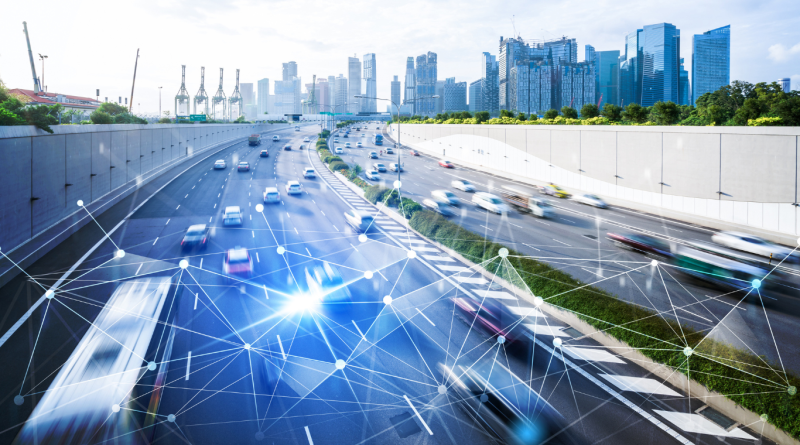6 Ways AI is Making Transportation Safer and More Efficient
Artificial Intelligence (AI) is reshaping the transportation industry, offering innovative solutions that enhance efficiency, safety, and sustainability. From self-driving cars to intelligent traffic management systems, AI is improving mobility while reducing congestion and environmental impact.
This article explores how AI is used in transportation and highlights six key benefits driving its adoption.
How Is AI Used in Transportation?
AI is integrated into various aspects of transportation, optimizing operations and enhancing user experiences. Some of the most common applications include:
- Autonomous Vehicles: AI enables self-driving cars, trucks, and buses to navigate roads safely using sensors, cameras, and deep learning models.
- Traffic Prediction and Management: AI analyzes real-time and historical data to optimize traffic signals, reduce congestion, and improve urban mobility.
- Fleet Management: AI-driven systems help logistics companies monitor vehicle performance, optimize routes, and predict maintenance needs.
- Public Transit Optimization: AI enhances public transportation by predicting demand, adjusting schedules, and improving passenger experiences.
- Smart Infrastructure: AI-powered road monitoring systems detect hazards, automate toll collection, and improve overall transportation efficiency.
With these AI applications, the transportation industry is evolving rapidly, leading to improved mobility and cost savings for businesses and consumers alike.
1. Enhanced Traffic Management
AI-driven traffic management systems are revolutionizing how cities handle congestion. By analyzing real-time data from traffic cameras, sensors, and GPS systems, AI helps optimize traffic flow, reducing delays and fuel consumption.
For example, AI-powered traffic lights in Pittsburgh, Pennsylvania, have reduced travel times by 25% and vehicle emissions by 20%. These systems dynamically adjust signal timings based on real-time traffic conditions, preventing unnecessary stops and easing congestion.
AI also supports smart navigation apps like Google Maps and Waze, providing users with the fastest routes based on live traffic updates. As more cities adopt AI-driven traffic solutions, urban mobility will continue to improve.
2. Improved Road Safety
AI is significantly improving road safety by reducing human errors, which account for over 90% of traffic accidents globally. Advanced Driver Assistance Systems (ADAS) powered by AI can:
- Detect lane departures and issue warnings.
- Monitor driver behavior to prevent drowsy or distracted driving.
- Automatically apply emergency brakes to avoid collisions.
AI-powered dashcams and in-cabin monitoring systems are also becoming standard in commercial fleets, helping detect unsafe driving behaviors and ensuring compliance with safety regulations. Companies like Tesla and Volvo use AI-driven sensors and cameras to enhance vehicle safety, reducing the risk of accidents.
With continued advancements in AI-based road safety technologies, traffic fatalities and injuries are expected to decline in the coming years.
3. Predictive Maintenance
Traditional vehicle maintenance is often reactive, leading to costly breakdowns and unexpected repairs. AI enables predictive maintenance by analyzing sensor data to identify potential mechanical issues before they become serious problems.
For example, AI-powered systems in commercial fleets monitor engine health, tire pressure, and brake performance. If an issue is detected, the system alerts the operator to schedule maintenance, preventing costly downtime.
In the aviation industry, AI-driven predictive maintenance is helping airlines reduce delays and maintenance costs. Airbus and Boeing use AI to analyze aircraft sensor data, predicting failures and optimizing repair schedules, ensuring passenger safety and operational efficiency.
Predictive maintenance reduces operational costs and enhances reliability, making transportation more efficient for businesses and consumers alike.
4. Autonomous Vehicles
Autonomous vehicles (AVs) are one of the most revolutionary AI applications in transportation. Companies like Tesla and Waymo are developing self-driving cars that use AI-powered perception and decision-making systems to navigate complex environments safely.
AI in AVs works by:
- Processing data from LiDAR, cameras, and radar to detect obstacles and traffic signals.
- Using machine learning algorithms to make real-time driving decisions.
- Continuously learning from real-world driving experiences to improve performance.
In the trucking industry, AI-powered self-driving trucks are being tested to improve logistics efficiency and reduce driver fatigue-related accidents.
While full adoption of AVs is still in progress due to regulatory and technical challenges, AI-powered self-driving technology is expected to transform mobility in the coming decades.
5. Efficient Public Transportation
AI is enhancing public transportation by making it more predictive, adaptive, and user-friendly. Public transit agencies use AI to:
- Optimize bus and train schedules based on passenger demand.
- Improve ticketing systems through AI-powered facial recognition and contactless payments.
- Provide real-time updates on delays and service disruptions.
For instance, AI-powered smart ticketing systems in London’s Underground use machine learning to analyze commuter data and optimize fare pricing. AI also enables on-demand public transport solutions, allowing dynamic routing of buses and ride-sharing services to match demand in real time.
By integrating AI, cities can provide faster, more efficient public transport options, reducing congestion and promoting sustainable urban mobility.
6. Eco-Friendly Innovations
Sustainability is a major focus in transportation, and AI is playing a critical role in reducing environmental impact. AI-driven solutions help:
- Optimize fuel consumption by recommending the most efficient routes.
- Reduce emissions by managing traffic flow and minimizing idle time.
- Support electric vehicle (EV) infrastructure by predicting energy demand and optimizing charging station placement.
For example, AI-powered fleet management systems in logistics companies track fuel usage and recommend eco-friendly driving practices. AI is also used in rail and aviation industries to optimize fuel efficiency, reducing carbon footprints.
As the transportation sector moves towards greener solutions, AI will continue to drive innovations that support a more sustainable future.
AI is revolutionizing transportation by making it safer, more efficient, and environmentally friendly.
As technology continues to evolve, we can expect even more advancements in AI-powered transportation, including hyper-efficient smart cities, improved AV safety, and greater sustainability efforts. The future of transportation is AI-driven, promising a world of seamless, intelligent, and eco-friendly mobility.
